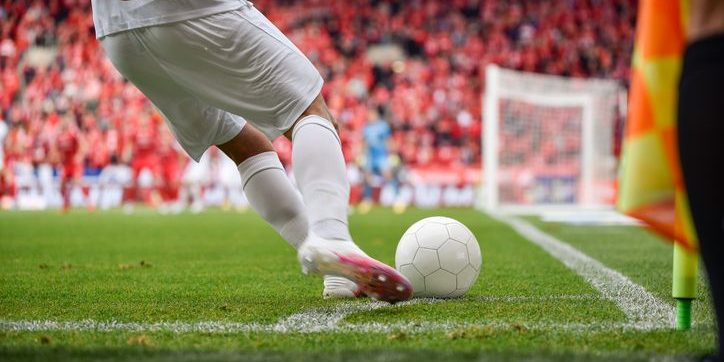Investing in the prevention, diagnosis and early treatment of possible injuries is the key to coping with today’s demands and is especially important in hip pathology, which is characterized by challenging diagnosis and treatment.
Pain in the hip area (coxalgia) is a common cause of downtime and reduced performance in soccer, due to the high loads it is subjected to at times such as sprinting with changes of direction or shooting.
The hip joint is formed by the head of the femur (a spherical structure in the upper region of the thigh bone) which articulates with the acetabulum (a cavity in the lower and lateral region of the pelvis), both of which are lined with cartilage. Between these structures is the larbrum (“hip meniscus”), a fibrocartilaginous structure which is important for stability and load distribution. There are also extra-articular structures in the hip region that can be a source of pain, the most important of which are the adductors (muscles of the inner thigh), the abdominal muscles and their respective bony insertions (in the pubis – the most anterior bone of the pelvis).
Muscle strains are the most common cause of thigh pain in soccer. The vast majority are strains of the adductors, hamstrings (muscles in the back of the thigh) or quadriceps (muscles in the front of the thigh). One of the most important risk factors for this type of injury is muscle imbalances, particularly between the abductors (muscles on the side of the thigh) and the adductors. Correcting these imbalances through physiotherapy with specific muscle strengthening is fundamental for rehabilitation and preventing new muscle injuries.
Pubic syndrome (pubalgia or sportsman’s hernia) is a set of injuries that result from an imbalance between the muscle groups that are located in the pubis – the abdominal muscles and the adductors. It is very common in sports involving rapid twisting of the trunk, such as soccer. It is characterized by pain in the groin, inguinal region or pubic symphysis, caused by stretching, tearing or inflammation of various muscle, tendon, ligament or bone structures (osteitis pubis) in this region. Treatment consists of a specific rehabilitation program aimed at correcting existing muscle imbalances. In refractory cases, surgical intervention may be necessary, depending on the type of structures affected, the most common being reinforcement of the abdominal muscles with a synthetic mesh (similar to surgery for inguinal hernia) and tenotomy (cutting of the tendon) of the adductors.
However, the muscle injuries described above can occur as a result of undiagnosed hip joint pathology. In this context, Femoroacetabular Impingement (FAI) is particularly important.
FAC results from abnormal and premature contact between the femoral neck and the acetabulum during the hip’s range of motion. This contact causes damage to the acetabular labrum and the cartilage lining the joint, and is a major risk factor for early arthrosis (wear and tear of the cartilage). There are two types of conflict: CAM – loss of sphericity of the femoral head (more common in young males) and Pincer – abnormal morphology of the acetabulum with increased coverage (more common in middle-aged women).
The prevalence of CFA in soccer is higher than in the general population, and it is a frequent cause of undiagnosed hip pain. The origin of the deformity has not been fully established. Genetic factors and sporting activities with high loads and hip extensions may be risk factors. Several studies show that the development of CAM evolves gradually during skeletal maturation and stabilizes around the time of growth cartilage closure. It is therefore imperative to adjust sports activities at a younger age, during bone growth, in order to prevent the development of CFA.
The most common symptoms are pain in the groin, limited mobility (especially internal rotation) or rebound. Some cases, despite the deformity, may only show symptoms at a late stage. Diagnosis is based on a careful clinical examination, complemented by auxiliary tests such as radiography and magnetic resonance imaging.
Medical treatment is based on anti-inflammatory medication and physiotherapy for mobility work and specific muscle strengthening of the hip. Refractory cases are referred for surgery, which involves reconstructing the anatomy of the hip and correcting conflict factors and associated injuries, such as suturing the labrum or treating cartilage lesions. In most cases, this correction is carried out using a minimally invasive technique – Hip Arthroscopy. It should be performed promptly on people with complaints in order to prevent irreversible cartilage damage and progression to arthrosis. Hip arthroscopy is a surgical procedure performed on an outpatient basis, through 3 incisions of 1 cm, with the need to wear crutches for 10 days, and an expected recovery of 4-5 months before returning to competitive sporting activity.
CFA is very prevalent in competitive sports, particularly soccer, and when left untreated can have consequences for the longevity of the hip.
In the event of hip pain, players should seek clinical help aimed at early diagnosis and treatment of hip pathology, with the aim of resolving the possible injury and returning to sporting or competitive activity.


